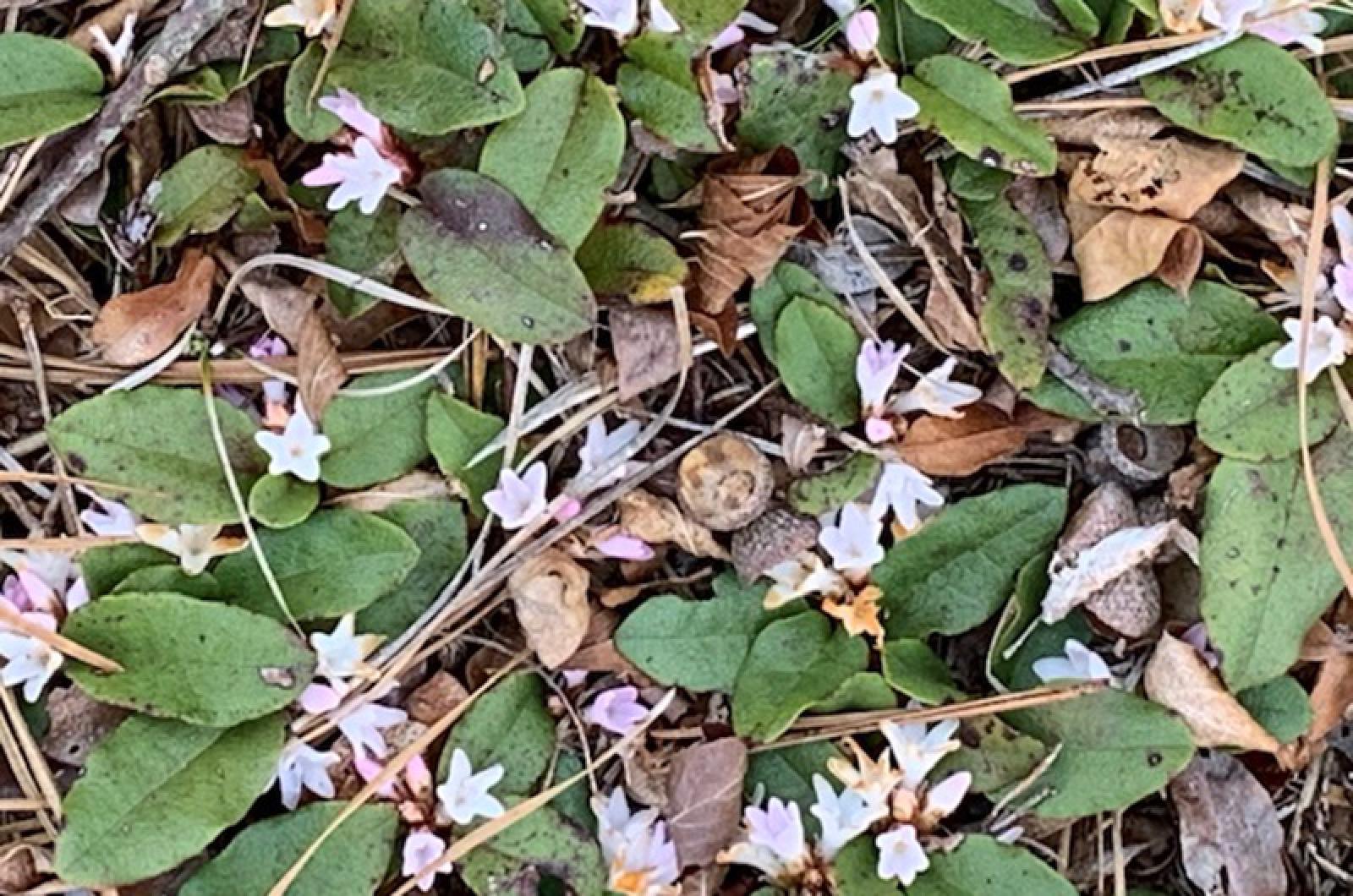If I were a plant, I might be trailing arbutus.
This plant, also known as mayflower, has been called diminutive, as it is petite and prone on the ground. I am definitely grounded, though I prefer small in terms of descriptors for my somewhat south of five-foot size. Its scientific name, epigaea repens, translates into crawling upon the earth. Yup, me too — especially when I am down in the dirt and looking at plants.
The plant has been called tough (as have I on occasion). Trailing arbutus is tough in terms of its difficulty in transplanting. If you try, you will fail, as it rarely, if ever, survives after being dug up and replanted. Because of this fact, its use and overharvesting for use in wreaths, it has been illegal to remove from certain areas since approximately 1925.
One section of Massachusetts General Laws titled Flower or Floral Emblem of Commonwealth; Protection; Penalty states, “Any person who pulls up or digs up the plant of the mayflower or any part thereof, or injures such plant or any part thereof except in so far as is reasonably necessary in procuring the flower therefrom, within the limits of any state highway or any other public way or place, or upon the land of another person without written authority from him, shall be punished by a fine of not more than fifty dollars; but if a person does any of the aforesaid acts while in disguise or secretly in the nighttime he shall be punished by a fine of not more than one hundred dollars.”
The protections result from its overharvesting and designation as the official Massachusetts state flower. That title was not given easily: the little flower had to put up quite a fight and amass an army of allies. Bills in 1900 and 1901 to codify this plant’s place in state history were both defeated and it took 17 years to get it approved. It become law of the land only after the board of education asked for a student vote. By an overwhelming majority of two to one, trailing arbutus beat out its challenger — the water lily — for the state title.
So don’t be tempted to take it from public areas, even as this flower blooms beautifully across the Island. Its white and pink flowers (designating older specimens) are delicate denizens of the forest floor and thrive easily along trails and roads and in yards. If you are lucky enough to have some on your land or can get written permission from someone that does, you could find uses for its flowers.
Described as spicy with a slightly acidic tang, the flowers of trailing arbutus are edible. Call it a wayside nibble or a hiking snack; or carefully collect a few for a salad or to freeze in ice cubes for a fancy and tasty tipple.
Besides beauty, these flowers and the plant itself is known as a thirst quencher and remedy for kidney, bladder, and stomach ailments. It isn’t advisable to try creating a tonic yourself, since trailing arbutus contains a compound called arbutin which can hydrolyze into hydroquinone, which is toxic.
Small and spicy with a bit of risk could be an interesting epitaph; and a having special place in heart and history might just be something to which one should aspire whether you are a plant or a person.
Suzan Bellincampi is islands director for Felix Neck Wildlife Sanctuary in Edgartown and the Nantucket Wildlife Sanctuaries. She is also the author of Martha’s Vineyard: A Field Guide to Island Nature and The Nature of Martha’s Vineyard.




Comments (1)
Comments
Comment policy »